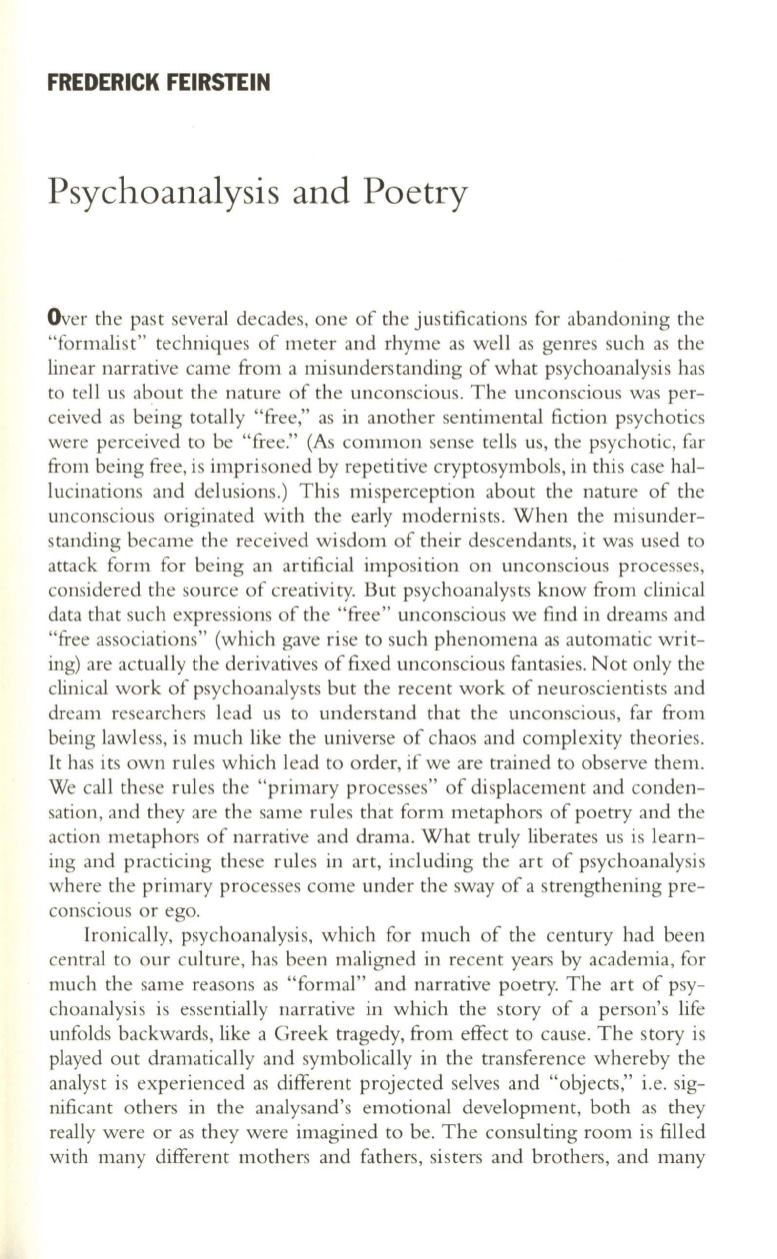
FREDERICK FEIRSTEIN
Psychoanalysis and Poetry
Over the past several decades, one of the justifications for abandoning the
"formalist" techniques of meter and rhyme as well as genres such as the
linear narrative came from a misunderstanding of what psychoanalysis has
to tell us about the nature of the unconscious. The unconscious was per–
ceived as being totally "free," as in another sentimental fiction psychotics
were perceived to be "free." (As corrunon sense tells us, the psychotic, far
from being free, is imprisoned by repetitive cryptosymbols, in this case hal–
lucinations and delusions.) This misperception about the nature of the
unconscious originated with the early modernists. When the misunder–
standing became the received wisdom of their descendants, it was used to
attack form for being an artificial imposition on unconscious processes,
considered the source of creativity. But psychoanalysts know from clinical
data that such expressions of the "free" unconscious we find in dreams and
"free associations" (which gave rise to such phenomena as automatic writ–
ing) are actually the derivatives of fixed unconscious fantasies. Not only the
clinical work of psychoanalysts but the recent work of neuroscientists and
dream researchers lead us to understand that the unconscious, far from
being lawless, is much like the universe of chaos and complexity theories.
It has its own rules which lead to order, if we are trained to observe them.
We call these rules the " primary processes" of displacement and conden–
sation, and they are the same rules that form metaphors of poetry and the
action metaphors of narrative and drama. What truly liberates us is learn–
ing and practicing these rules in art, including the art of psychoanalysis
where the primary processes come under the sway of a strengthening pre–
COnsCIOuS or ego.
Ironically, psychoanalysis, which for much of the century had been
central to our culture, has been maligned in recent years by academia, for
much the same reasons as "formal" and narrative poetry. The art of psy–
choanalysis is essentially narrative in which the story of a person's life
unfolds backwards, like a Greek tragedy, from effect to cause. The story is
played out dramatically and symbolically in the transference whereby the
analyst is experienced as different projected selves and "objects," i.e. sig–
nificant others in the analysand's emotional development, both as they
really were or as they were imagined to be. The consulting room is filled
with nuny different mothers and fathers, sisters and brothers, and many


